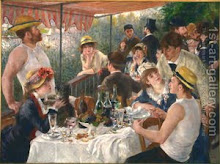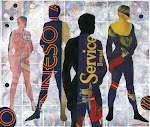During his life Picasso passed through many phases, both artistically and personally, including Modernism, his Blue and Pink period, and Cubism, to name a few. Picasso discovered modernism while recovering from Scarlet Fever at age 16. By this time Picasso was already recognised as a gifted painter and his work had been exhibited in Barcelona. Picasso was so excited about Modernism that he and a friend moved in 1900 to Paris to rub shoulders with the Modernist masters of the time.
The suicide of his friend in 1901 led Picasso into his Blue and Pink period where, as the name suggests, Picasso's paintings were predominately of these two colors. Two of his more famous paintings of this time are "Life" and The Tragedy.
By 1907 Picasso was turning art on its head by painting from more than one perspective, Cubism. His Cubism work is probably his most known and controversial work because it does not appear to reflect real life. It also led to some of his most colourful and expressive works, such as -"Weeping Woman" and "Woman With Pears."Picasso also produced a large number of sculpted works, particularly in the 40s and 50s. He also designed and produced a large number of ceramic work.
The Second World War had an enormous impact on Picasso, and led him to designing the poster of the white dove announcing the World Peace Congress in Paris in 1949. He was an advocate for peace for the rest of his life following the war. He produced works of art protesting invasions and depicting the horrors of war.
By the end of his life Picasso was considered by many to be the greatest artist of the 20th Century and a genius. His influence is still felt today in much of modern art.
Pablo Ruiz Picasso was born on October 25, 1881 to Don José Ruiz Blasco (1838-1939) and Doña Maria Picasso y Lopez (1855-1939). The family at the time resided in Málaga, Spain, where Don José, a painter himself, taught drawing at the local school of Fine Arts and Crafts. Pablo spent the first ten years of his life there. The family was far from rich, and when 2 other children were born -- Dolorès ("Lola") in 1884 and Concepción ("Conchita") in 1887 -- it was often difficult to make ends meet. When Don José was offered a better-paid job, he accepted it immediately, and the Picassos moved to the provincial capital of La Coruna, where they lived for the next four years. In 1892, Pablo entered the School of Fine Arts there, but it was mostly his father who taught him painting. By 1894 Pablo’s works were so well executed for a boy of his age that his father recognized Pablo’s amazing talent, and, handing Pablo his brush and palette, declared that he would never paint again.
In 1895 Don José got a professorship at “La Lonja”, the School of Fine Arts in Barcelona, and the family settled there. Pablo passed the entrance examination in an advanced course in classical art and still life at the same school. He was better than senior students doing their final exam projects.
“Unlike in music, there are no child prodigies in painting. What people regard as premature genius is the genius of childhood. It gradually disappears as they get older. It is possible for such a child to become a real painter one day, perhaps even a great painter. But he would have to start right from the beginning. So far as I am concerned, I did not have that genius. My first drawings could never have been shown at an exhibition of children’s drawings. I lacked the clumsiness of a child, his naivety. I made academic drawings at the age of seven, the minute precision of which frightened me.” -- Picasso.




















No comments:
Post a Comment